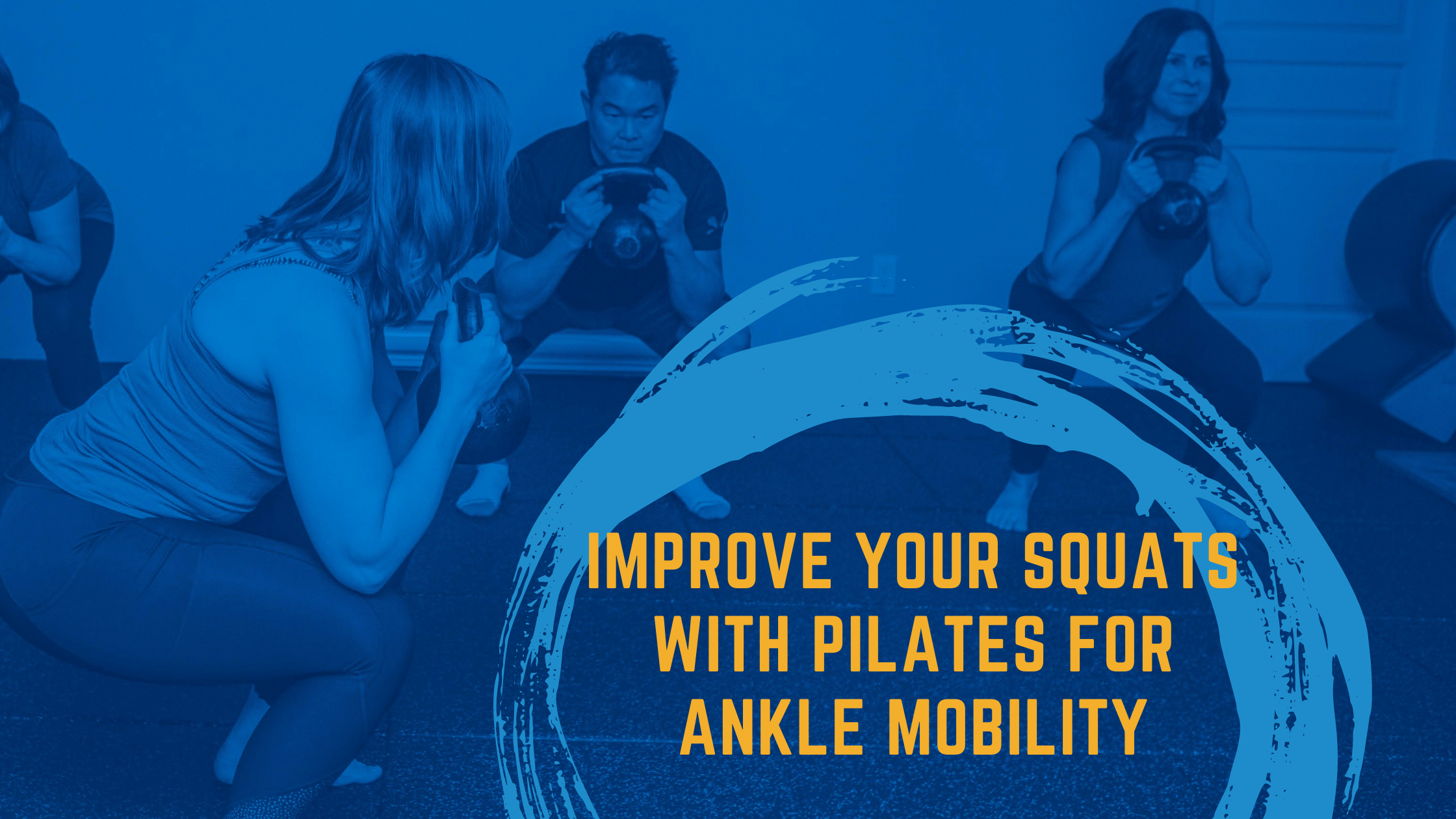
If you are looking to better your squat depth or form, have you considered looking at your ankle mobility? When you squat, you flex at the hips, knees, and ankles. This isn’t something most people take note of, but your ankles are a huge part of the squat movement! And since squats show up in all sorts of exercises, sports, and daily life, I have some tips on how to improve your squats with Pilates for ankle mobility.
Why Ankle Mobility is Important for Squats
There is no getting away from squats, and each body part works together. We use our ankles, knees, hips, and even require upper back and shoulder when doing a squat. You know that I’m going to tell you that Pilates can help with them all (it can!), but let’s get good movement starting at the bottom.
When ankle mobility is limited, it decreases the depth of your squat. Your hips and knees may have a good range of motion, but if your ankles don’t (like mine), there is a tendency to overcompensate. This is when you see people folding too much at the waist, which can strain the back – especially if you are squatting with weights.
There are a wide range of ways to increase ankle mobility, including non-Pilates ones that I use in strength training and share in Sweat with Melissa workouts. But there are so many ways to improve your squats with Pilates for ankle mobility that I can’t help but share!
Improve Your Squats with Pilates for Ankle Mobility
Some of my favourite ankle-focuses Pilates exercises are:
- Footwork on the reformer
- Foot/Ankle (also called Achilles stretch) on the wunda chair
- Footwork on the tower push-through bar with the spring from below
- Standing footwork on the 2×4
- Tendon Stretch on the reformer
You probably noticed that footwork pops up on three different pieces of equipment. But what’s interesting is that on each apparatus you are in a different position. This shows how important our feet are to everything else our body does.
- On the reformer, you’re on your back with your feet on the footbar. As you straighten your legs the springs open, and as you bend they close.
- On the chair you are seated on top of the chair with feet on the pedal that is below you. As you press down the springs open, but your legs never fully extend.
- On the tower you are on your back. This time, your feet go up on the push-through bar above you. When you straighten your legs they will be at a 90 degree angle to your hips.
In each of these exercises, you begin with the balls of your feet on the bar with your toes pointed slightly. Then you do the movements with your arches on the bar, with your feet “hugging” the bar. Next, you put your heels on the bar, dorsi flexing (bringing your toes toward your shins). Lastly, you move back to the balls of your feet but move from pointed to flexed positions.
You can see how we work through a complete range of flexing and pointing your feet from a variety of angles, widening the range of mobility in your ankles.
Standing footwork on the 2×4 is a little bit different than the other footwork, as you are using body weight and gravity vs spring tension for resistance. Again, we work through various lifting/lowering movements including some plie type exercising which work on the ankle, foot, and knee mobility.
Finally, the tendon stretch on the reformer (which is similar to tendon stretch on the wunda chair and monkey on the tower) has you wrapping your foot around the end of the reformer carriage. Your heels reach down toward the spring, which creates a stretch in the calves and achilles, as well as strengthens the arches.
I love how Pilates helps our bodies move better; especially the often-neglected parts like the ankle. It’s all connected! Remember that little fact the next time you are striving to improve your depth or form in a specific exercise; perhaps you are looking in the wrong place. I wonder: if you can improve your squats with Pilates ankle mobility exercises, what else can Pilates do?

View comments
+ Leave a comment